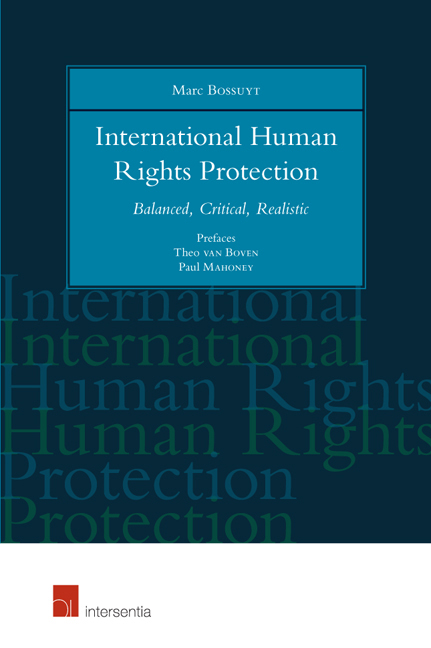Book contents
- Frontmatter
- Dedication
- Preface: A Lifetime of Fidelity and Participation
- Preface: A Penetrating and Salutary Analysis of the European System of Human Rights Protection
- Introduction
- Contents
- Epigraph
- PART ONE International Protection of Human Rights in General
- PART TWO Specific Human Rights Protection
- A Some Specific Human Rights Issues
- B Some Specific Human Rights Regimes
- Chapter XIII The Protection of Refugees in International Law
- Chapter XIV The Protection of Minorities in International Law
- Chapter XV The Protection of Victims of Armed Conflicts
- Annex: At the Crossroads of Law and Politics
- Bibliographies
- About the Author
Chapter XV - The Protection of Victims of Armed Conflicts
from B - Some Specific Human Rights Regimes
Published online by Cambridge University Press: 25 September 2018
- Frontmatter
- Dedication
- Preface: A Lifetime of Fidelity and Participation
- Preface: A Penetrating and Salutary Analysis of the European System of Human Rights Protection
- Introduction
- Contents
- Epigraph
- PART ONE International Protection of Human Rights in General
- PART TWO Specific Human Rights Protection
- A Some Specific Human Rights Issues
- B Some Specific Human Rights Regimes
- Chapter XIII The Protection of Refugees in International Law
- Chapter XIV The Protection of Minorities in International Law
- Chapter XV The Protection of Victims of Armed Conflicts
- Annex: At the Crossroads of Law and Politics
- Bibliographies
- About the Author
Summary
Contrary to the jus ad bellum which deals with the right of waging war and with the restrictions and conditions applicable to that right, the jus in bello aims at limiting as much as possible the injuries caused by war. The term most frequently used to refer to that branch of international law is “international humanitarian law”, though the term “humanitarian international law” would be more correct. Traditionally, a distinction is made between, on the one hand, the law of The Hague regulating the means of warfare and, on the other hand, the law of Geneva aiming at protecting certain persons and property during war time.
A. THE LAW OF THE HAGUE
The law of The Hague concerns the means of warfare by defining the techniques that may be used and the weapons that are authorised in armed conflicts. The relations between belligerent and neutral States are also governed by the law of The Hague. Several documents are at the origin of the law of The Hague adopted at Conferences in that city in 1899 and 1907.
The so-called “Lieber Instructions” represent the first attempt to codify the laws of war. Those “Instructions for the Government of Armies of the United States in the Field” were prepared during the American Civil War by Professor Francis Lieber and promulgated by US President Abraham Lincoln on 24 April 1863. “Although only binding on the forces of the United States, they correspond”, as stated by Dietrich Schindler and Jiri Toman, “to a great extent to the laws and customs of war existing at that time”.
The Declaration of St Petersburg of 11 December 1868 “renouncing the use, in time of war, of explosive projectiles under 400 grammes weight” prohibited the use of small explosive or incendiary projectiles. The Declaration reflects a compromise aimed at reconciling “the necessities of war with the laws of humanity”. The need for that conciliation is explained in the preamble of the Declaration as follows:
“Considering
That the progress of civilisation should have the effect of alleviating as much as possible the calamities of war;
That the only legitimate object which states should endeavour to accomplish during war is to weaken the military forces of the enemy;
- Type
- Chapter
- Information
- International Human Rights ProtectionBalanced, Critical, Realistic, pp. 171 - 180Publisher: IntersentiaPrint publication year: 2016

